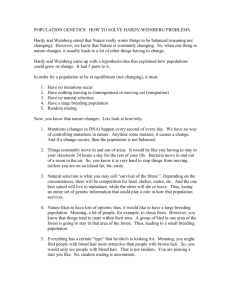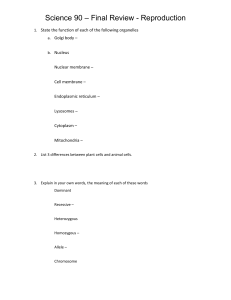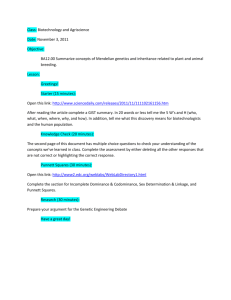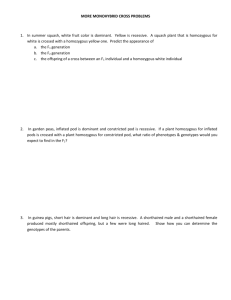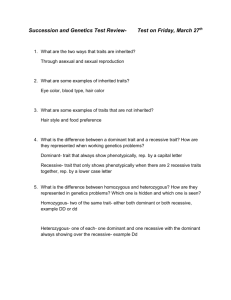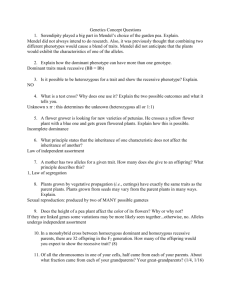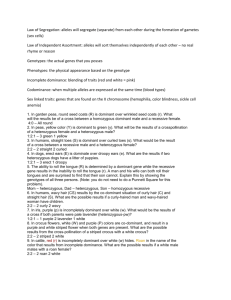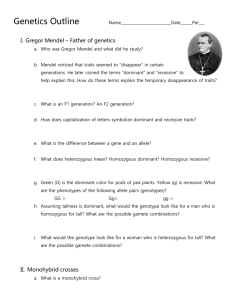Hardy Weinberg Equilibrium Genetic equilibrium means there is a
advertisement
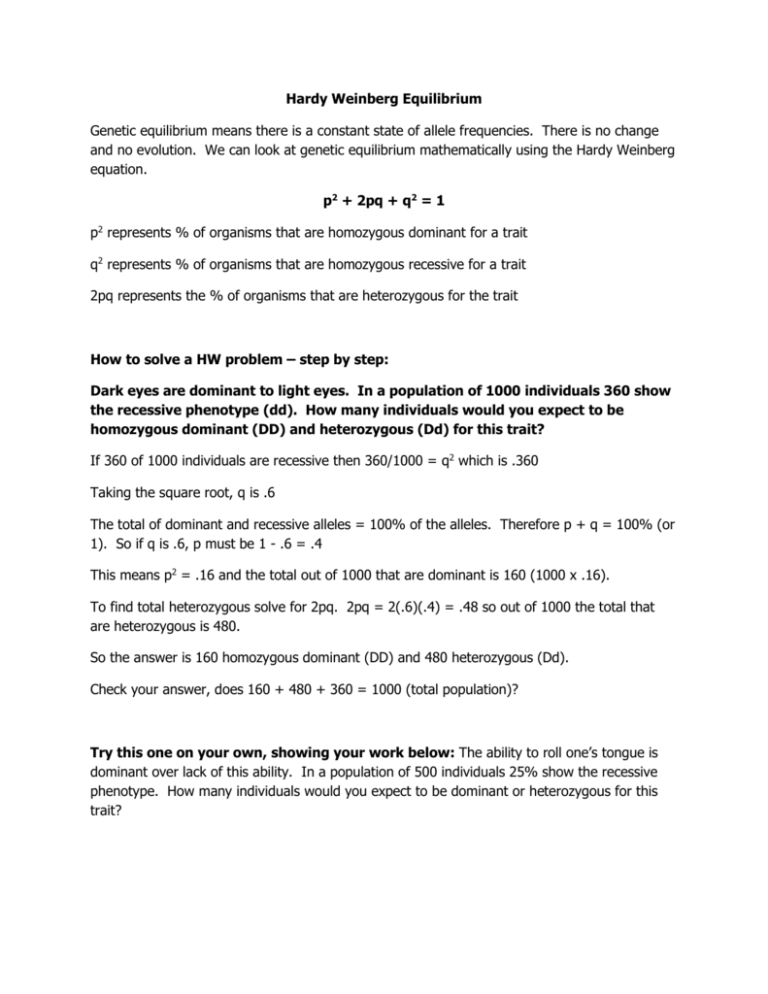
Hardy Weinberg Equilibrium Genetic equilibrium means there is a constant state of allele frequencies. There is no change and no evolution. We can look at genetic equilibrium mathematically using the Hardy Weinberg equation. p2 + 2pq + q2 = 1 p2 represents % of organisms that are homozygous dominant for a trait q2 represents % of organisms that are homozygous recessive for a trait 2pq represents the % of organisms that are heterozygous for the trait How to solve a HW problem – step by step: Dark eyes are dominant to light eyes. In a population of 1000 individuals 360 show the recessive phenotype (dd). How many individuals would you expect to be homozygous dominant (DD) and heterozygous (Dd) for this trait? If 360 of 1000 individuals are recessive then 360/1000 = q2 which is .360 Taking the square root, q is .6 The total of dominant and recessive alleles = 100% of the alleles. Therefore p + q = 100% (or 1). So if q is .6, p must be 1 - .6 = .4 This means p2 = .16 and the total out of 1000 that are dominant is 160 (1000 x .16). To find total heterozygous solve for 2pq. 2pq = 2(.6)(.4) = .48 so out of 1000 the total that are heterozygous is 480. So the answer is 160 homozygous dominant (DD) and 480 heterozygous (Dd). Check your answer, does 160 + 480 + 360 = 1000 (total population)? Try this one on your own, showing your work below: The ability to roll one’s tongue is dominant over lack of this ability. In a population of 500 individuals 25% show the recessive phenotype. How many individuals would you expect to be dominant or heterozygous for this trait? Name: ___________________________ Period: ______________ Practice problems for Hardy Weinberg (show your work!) 1. Having a Widow’s peak is dominant to lacking a widow’s peak. In a population of 1000 individuals 510 show the dominant phenotype. How many individuals would you expect of each of the possible three genotypes for this trait? 2. In the U.S. about 16% of the population is Rh- blood type. Rh- is recessive to Rh+. If the student population of DPHS is 2400, how many students would you expect for each of the three possible genotypes? 3. In the 1920’s a chemist at DuPont Lab found that some individuals have the ability to taste a chemical called phenylthiocarbamide (PTC), while others did not. Later it found the ability to taste this chemical is determined by a dominant allele. In a study of 1600 parents in Ohio, it was found that 461 were non tasters. What would you expect were the percentages of the three possible genotypes in this case? 4. In Nigeria, 4% of newborn babies have sickle cell anemia which is a recessive trait. Out of a random population of 1000 newborn babies how many would you expect for each of the three possible genotypes?

